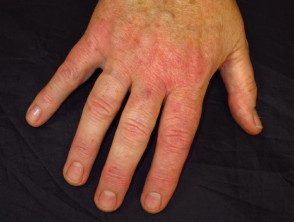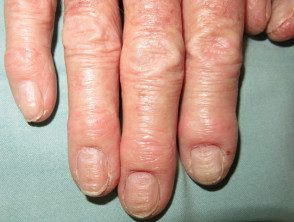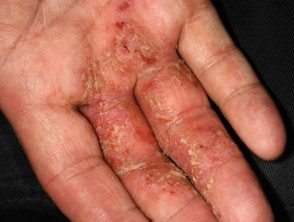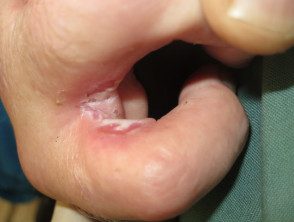Introduction
Millions of women around the world work as homemakers, homemakers, or stay-at-home mothers, and are prone to skin disorders as a result of their work at home.
While more and more men are also stay-at-home wives, homemakers and fathers, women employed in the home have historically performed more wet jobs (e.g. cleaning, washing) than men and have tended to suffer more cumulative irritating Contact dermatitis of the hands caused by wet work. Dermatitis of the housewife's hand (hand eczema), is one of the most frequent reasons for a housewife to visit a dermatologist.
Why are housewives particularly at risk for skin disorders?
Housewives are prone to skin problems due to:
- Wet work, that is, frequent exposure of the hands to water.
- Exposure to chemicals in cleaners, disinfectants, polishes, and other household products.
- Do not wear gloves or use other personal protective equipment
- Extended lack of education or understanding of the need for skin protection.
Understanding occupational skin disorders
The terms occupational skin disorder or occupational skin disease are used to refer to dermatological conditions that develop or worsen due to the nature of a person's work. Skin disorders are believed to account for 40-70% of all occupational diseases. Skin disorders occur when the skin's natural defenses are compromised by mechanical, chemical, or biological agents, leaving the skin more vulnerable to infection and the breakdown of the skin barrier.
Occupational skin disorders in housewives.
Skin problems that arise in housewives include:
Housewife hand dermatitis
Housewife hand dermatitis was named after a large number of housewives who suffer from hand dermatitis due to both irritant contact dermatitis and allergic contact dermatitis. It has been classified in acute "Wet" and chronic "Dry" types.
- The wet form of housewife hand dermatitis involves the back of the hand and fingers, as well as the palms. Its signs and symptoms include severe itching, inflammation and blisters. Common causes of this type of acute contact dermatitis include irritants such as water, detergents and rubber gloves, and Allergens like nickel, fragrances, and rubber accelerators. This type of dermatitis tends to persist throughout the year.
- The dry form of housewife hand dermatitis begins at the tips of the first three fingers. As the skin disorder progresses, all four fingers of both hands will be affected. Signs and symptoms of chronic hand dermatitis include mild itching, hyperpigmentation, dryness and deformity of the nails. The chronic dry form of hand dermatitis tends to be more severe during the winter months.
Housewife hand dermatitis

Irritant contact dermatitis

Irritant contact dermatitis

Paronychia with hand dermatitis.
Mechanical injuries
Mechanical injuries to homemakers can include minor abrasions and cuts, often associated with scrubbing floors or contact with other rough surfaces.
Infections
- Secondary bacterial Skin infections can complicate dermatitis and wounds.
-
Candida yeast infections on the membranes of the fingers (intertrigo) may be due to wet work.
-
Orf can occur in housewives due to handling pet sheep and goats.
Infections in housewives

Dermatitis of the infected hand

Interdigital candida infection

Orf
Assess the risks.
Since the home environment is not a "workplace" in the traditional sense, home security is up to the individual homemaker. Factors to consider include:
- Safe handling and storage of various household cleaners
- Verification of the instructions for the use of various chemicals
- Evaluate chemicals used, possibly switching to less aggressive chemicals (or avoiding them, for example by using microfiber cloths), changing cleaning methods, or mixing or diluting products
- Wear appropriate protective gloves during cleaning activities to reduce exposure to water or chemicals.
Personal protection equipment
The most important personal protective equipment for housewives should be gloves, preferably of a type other than latex to avoid possible sensitization latex If working with volatile / airborne chemicals, protective aprons and masks or goggles should also be considered.
Hand Care Tips for Housewives
Good hand care can help prevent hand dermatitis or treat it once it has developed. Tips include:
- Limit hand washing to 2-3 times a day
- Using a barrier cream or layered gloves for added protection
- Share household cleaning chores with other family members or use other means to reduce exposure to water and irritants (for example, using a dishwasher instead of hand washing dishes).
- Avoid direct contact with soaps, detergents or solvents.
- Not dying hair at home
- Avoid using rubber gloves.
Diagnosis and treatment of occupational skin disorders.
The diagnosis of an occupational skin disorder should include:
- A careful history of the patient, particularly related to specific tasks and contact with potential irritants and allergens.
- Consideration of other medical conditions of the patient, especially those related to the immune system or atopy
- A clinical exam to look at the appearance and location of the dermatitis.
Treatment of an occupational skin disorder may include:
- Education on how to reduce contact with irritants and allergens.
- Barrier creams and emollients
- Current steroids
- Using mild soap-free cleaners
- Oral antibiotics for secondary infections.
-
Oral steroids and immunomodulatory drugs for severe or persistent dermatitis.

